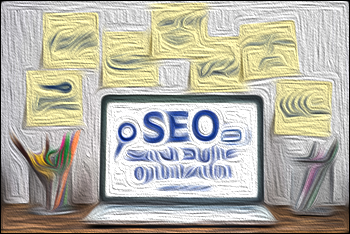
50+ Best Maintenance Services To Generate Monthly Recurring Revenue (MRR) 💵
Offering WordPress maintenance as a subscription-based service or web care plan will ensure your client’s website’s security, performance, and reliability and generate steady Monthly Recurring Revenue (MRR) for your digital agency or WordPress development business.
In this comprehensive guide to the best WordPress maintenance services, we look at many MRR-boosting opportunities for your business that you can include in your care plans and maintenance packages.
💡 Our WordPress Maintenance Services Sales Toolkit includes a growing library of maintenance service checklists covering all the services listed below. You can customize these checklists to build internal documentation for your business and ensure your team delivers services to the highest quality standards.

Customize over 60 checklists to ensure your team delivers services to the highest quality standards.
***
Here are the best WordPress maintenance services to include in your offering to boost client satisfaction and build your business a predictable (and growing) revenue stream.
The maintenance services listed below are grouped by key service categories and include a brief description of each service, its benefits, the recommended frequency for performing it, and why businesses need it.
Site Management and Monitoring 🛠️

With frequent downtime, broken links, and poor performance, users can become frustrated and leave, which can impact revenue. Regular monitoring helps identify issues early and address them proactively.
This category has a high potential for generating MRR as businesses are willing to invest in continuous oversight to avoid costly website disruptions. Most businesses understand the critical nature of backups and will subscribe to a service that ensures their data is safe and recoverable.
Offering the services below will guarantee continuous uptime and faster troubleshooting, significantly improving customer satisfaction.
Backup Configuration
Setting up backups ensures that your website’s data is safely stored, allowing you to restore it in case of data loss or corruption. Proper configuration includes choosing the right backup frequency, location (on-site or off-site), and what data types to include.
- Service Description: Set up automated and manual backups for the website’s files and databases.
- Benefits: Ensures proper backup settings and allows for easy recovery in case of data loss.
- Frequency: Initially, then review quarterly.
- Why Businesses Need This: Incorrect backup configurations can result in incomplete or unusable backups.
Backup Management
Managing backups involves monitoring and verifying the integrity of backup data, ensuring backups run on schedule, and troubleshooting any backup failures.
- Service Description: Regularly create and store website backups to prevent data loss.
- Benefits: Provides quick recovery from crashes or attacks.
- Frequency: Weekly or daily for high-traffic sites.
- Why Businesses Need This: Backups ensure minimal downtime and prevent permanent data loss.
This service can include the following options:
Automated Daily or Weekly Backups (On-Site and Off-Site)
Automating backups ensures regular, hands-free data preservation. On-site backups are stored locally, while off-site backups are stored remotely on external servers for safety and to protect against local disasters.
- Service Description: Automatically back up the entire site and database to on-site (local server) and off-site (cloud) locations.
- Benefits: Ensures that data is consistently preserved, providing multiple recovery options in case of data loss, server crashes, or cyberattacks.
- Frequency: Daily or weekly, depending on the site’s update frequency.
Full-site and Database Backups
Backing up all website files (content, themes, plugins) and databases ensures full recovery in case of site failure.
- Service Description: Create comprehensive backups of the entire website, including files, themes, plugins, media, and database.
- Benefits: It provides a full recovery option, protecting all aspects of the site. It ensures no data is lost in case of hardware failure, site corruption, or other disasters.
- Frequency: Monthly, with additional backups during significant updates or changes.
Scheduled Backups for Important Updates or Changes
Backups scheduled before major site updates or changes protect against potential failures, ensuring data is saved before updates and allowing a quick rollback if necessary.
- Service Description: Perform manual backups before major website updates or changes, such as theme or plugin updates.
- Benefits: Safeguards against potential problems caused by updates. If something breaks, the site can quickly be reverted to the pre-update version, minimizing downtime.
- Frequency: As needed, based on planned updates or modifications.
Backup Monitoring, Verification & Testing
Monitoring and testing backups regularly ensure that backups are verified for integrity, functioning correctly, and can be restored when needed.
- Service Description: Continuously track backup processes to ensure they are successful and available and regularly test backups to ensure they are functional and can be restored if needed.
- Benefits: Guarantees backup reliability and integrity, preventing situations where corrupted or incomplete backups cause extended downtime during recovery efforts.
- Frequency: Monthly or quarterly.
- Why Businesses Need This: Failed backups can lead to disastrous consequences if a website issue occurs.
Maintenance Reports
Maintenance reports provide a detailed overview of all completed tasks, including updates, security checks, website performance metrics, resolved security issues, maintenance activity summaries, and recommendations for future improvements.
- Service Description: Provide regular reports on website maintenance tasks and performance metrics.
- Benefits: Keeps clients informed about the health and performance of their website.
- Frequency: Weekly or monthly, depending on the client’s needs and plan.
- Why Businesses Need This: Transparency in maintenance ensures clients know the value of the service being provided.
24/7 Website Uptime & Downtime Monitoring
Monitoring your site 24/7 tracks your site’s availability, detecting when it goes offline, and ensures any downtime is immediately detected, allowing quick resolution to minimize disruption.
- Service Description: Continuously monitor and track the website’s uptime to ensure it remains accessible at all times. If the site goes down, the monitoring service should detect it immediately.
- Benefits: It minimizes the risk of revenue loss and reputation damage by ensuring the website is always available and preventing extended downtime.
- Frequency: Every minute to every few minutes, 24/7
- Why Businesses Need This: Downtime can lead to lost traffic, revenue, and credibility.
This service can also include the following options:
Instant Alerts for Any Downtime or Server Issues
Instant alerts notify you when downtime or server issues occur, enabling swift action to resolve the problem.
- Service Description: Send immediate notifications via email, SMS, or app when the website experiences downtime or server problems.
- Benefits: It allows for rapid response, minimizes downtime, and ensures business continuity by alerting key personnel when issues arise.
- Frequency: Alerts are triggered in real-time as soon as downtime is detected.
File & Media Cleanup
Removing unnecessary or outdated files and media and optimizing media libraries reduces site load, saves storage, and improves performance.
- Service Description: Remove unused or redundant files and media to save space and improve performance.
- Benefits: Reduces server load, speeds up backups, and improves performance.
- Frequency: Quarterly.
- Why Businesses Need This: Large amounts of unused media can bloat server storage and reduce efficiency.
Error Log Monitoring
Checking and monitoring error logs for site issues, including server or application errors, helps identify and resolve issues that could affect the website’s functionality.
- Service Description: Monitor error logs to detect and resolve issues that could affect website performance.
- Benefits: Allows early detection of bugs and system errors.
- Frequency: Weekly or after any major updates.
- Why Businesses Need This: Fixing errors promptly helps avoid larger issues that could break the website.
Plugin Compatibility Testing
Testing that plugins are compatible with your WordPress version and other installed plugins ensures that all plugins work smoothly together and prevents site crashes after updates.
- Service Description: Ensure all plugins are compatible with each other and the WordPress core.
- Benefits: Prevents conflicts and crashes.
- Frequency: Monthly or after updates.
- Why Businesses Need This: Plugin conflicts can cause functionality problems and site downtime.
Performance Monitoring
Regular performance checks measure your website’s speed and efficiency and identify areas for improvement.
- Service Description: Continuously monitor website performance to detect and resolve issues quickly.
- Benefits: Ensures smooth website operation and identifies performance bottlenecks.
- Frequency: Monthly.
- Why Businesses Need This: Performance issues can lead to slower page loads and lost traffic and conversions.
Additionally, this service can include the following options:
Load Time Monitoring and Analysis
Load time, also known as “page load time,” refers to the time it takes for a web page to fully load after a user makes a request, such as clicking a link. This time includes rendering all page content (text, images, scripts) on the user’s screen.
It is a key performance metric measured in seconds and is critical for user experience and SEO rankings. Faster load times generally improve user satisfaction and can lead to higher conversion rates. Ideally, pages should load quickly on desktop and mobile devices.
Measuring how fast your website loads can identify delay causes and provide insights into optimizing loading times.
- Service Description: Regularly check how quickly the website loads for users and provide detailed analysis to identify bottlenecks.
- Benefits: Fast load times ensure an optimal user experience, which boosts SEO rankings and reduces bounce rates.
- Frequency: Monitored at regular intervals, usually daily or weekly.
Automated Failover Systems (Switching Servers if One Goes Down)
Automated failover switches your site to a backup server if the primary server goes down, ensuring continuity without noticeable downtime.
- Service Description: Set up an automated system to switch traffic to a backup server to keep the site online if the primary server experiences issues.
- Benefits: Ensures continuous website availability even in the event of server failure, protecting the business from downtime-related losses.
- Frequency: Immediate response when server failure is detected.
Traffic Analysis & Data Reporting
Providing insights into visitor behavior, traffic sources, and website performance helps businesses make data-driven improvements.
- Service Description: Set up and track Google Analytics to monitor website performance and traffic. Monitor and report on website traffic to identify trends and opportunities.
- Benefits: Provides insights into user behavior, traffic sources, and site performance.
- Frequency: Monthly.
- Why Businesses Need This: Detailed traffic and data analysis help to inform and understand the effectiveness of website and content strategies and improve user engagement.
Quarterly Maintenance Review
A thorough quarterly review to assess website performance, security, and necessary updates ensures optimal functionality.
- Service Description: Perform a comprehensive review of a WordPress site every three months, checking for performance, security, and overall functionality. Tasks include checking updates, backups, and optimization.
- Benefits: A quarterly review ensures that the website runs smoothly, prevents potential issues from escalating, and keeps security measures up to date. It provides peace of mind and optimal performance.
- Frequency: Quarterly.
- Why Businesses Need This: Regular maintenance ensures that the website performs well, stays secure, and reduces the likelihood of downtime, affecting user experience and revenue. For businesses, this scheduled check-up minimizes risks and maximizes efficiency.
Yearly Maintenance Review
An annual comprehensive review of all aspects of your site, including SEO, security, updates, and performance, provides long-term strategic insights.
- Service Description: Conduct an annual review of the website’s overall health, performance, and security.
- Benefits: Provides a comprehensive overview of the site’s status and areas for improvement.
- Frequency: Annually.
- Why Businesses Need This: A yearly review helps clients plan for future improvements and ensures continued site success.
Security and Compliance 🔒

Maintenance services in this category include setting up firewalls, SSL certificates, malware scanning, and ensuring the site complies with local regulations like GDPR.
Security services offer great MRR potential because security is an ongoing concern that businesses must consistently maintain. Clients will subscribe for ongoing protection and peace of mind, making this service a cornerstone of a long-term contract.
Providing the services below helps businesses prevent breaches and fines, creating long-term trust.
Firewall Configuration
Properly configuring a firewall by setting up security rules blocks unauthorized access to your website and enhances site security.
- Service Description: Set up a firewall to protect the website from malicious traffic and brute force attacks.
- Benefits: A firewall enhances security by blocking suspicious traffic and bot attacks, preventing hackers from exploiting login pages, and reducing the risk of unauthorized access.
- Frequency: Continuous monitoring.
- Why Businesses Need This: A properly configured firewall is critical to preventing hacking attempts and malware.
Spam Protection
Implementing spam protection measures to block spam bots from leaving unwanted comments reduces spam comments and emails, improving site performance and user experience.
- Service Description: Implement tools and measures to reduce spam submissions and comments.
- Benefits: Prevents fake or malicious content from being submitted.
- Frequency: Daily.
- Why Businesses Need This: Excessive spam can harm site credibility and reduce performance.
Regular Security Audits
Performing routine checks to identify potential vulnerabilities in your site ensures your site remains secure from threats.
- Service Description: Conduct periodic security checks to identify vulnerabilities in the website’s code, configuration, and hosting environment and improve security.
- Benefits: Early detection of security vulnerabilities helps prevent breaches and potential threats before they become serious. Regular audits also demonstrate proactive security management, fostering client trust.
- Frequency: Quarterly or semi-annually.
- Why Businesses Need This: Regular audits prevent security breaches and keep the website secure.
Malware Detection & Removal
Scanning for and removing malicious software removes detected threats and helps to maintain site security.
- Service Description: Scan the website for malicious code, viruses, and malware and remove any malicious content if detected.
- Benefits: Regular scans protect the website from hacks, vulnerabilities, and data breaches, ensuring that malware is detected and removed before it can cause damage or lead to blacklisting by search engines.
- Frequency: Weekly or after significant changes.
- Why Businesses Need This: Malware can cause serious damage to a site’s reputation and data.
Security Patch Installation
Applying updates fixes security holes and vulnerabilities in your WordPress core, themes, and plugins.
- Service Description: Apply security patches to the WordPress core, themes, and plugins.
- Benefits: Closes security loopholes and reduces the risk of attacks.
- Frequency: Immediately when available.
- Why Businesses Need This: Failure to install patches can leave the site vulnerable to known exploits.
Two-Factor Authentication (2FA) Setup
Two-factor authentication (2FA) provides enhanced security, protection against cyber threats, compliance with regulations, improved employee confidence, and remote work security.
Requiring two forms of verification for login adds an extra layer of security, reducing the risk of unauthorized access.
- Service Description: Implement 2FA to add an extra layer of security by requiring users to verify their identity using a secondary method (e.g., SMS or authentication app) when logging in.
- Benefits: Adds a critical layer of security by making it harder for hackers to gain access even if they obtain the password.
- Frequency: One-time setup with ongoing monitoring.
- Why Businesses Need This: Implementing 2FA is a proactive step to protect a business from the potentially devastating consequences of security breaches.
SSL Certificate Renewal
An SSL certificate is a digital certificate that authenticates a website’s identity and enables secure, encrypted communication between a website and its users. SSL stands for Secure Sockets Layer, a protocol that encrypts data transmitted between a server and a browser, protecting sensitive information like passwords or payment details.
SSL certificates are essential for enabling HTTPS (HyperText Transfer Protocol Secure), a more secure version of HTTP, ensuring that data sent over the web is secure from tampering or interception.
Regular renewal of SSL certificates secures data transfer between your website and users and ensures continuous encryption and security.
- Service Description: Monitor the status of the SSL certificate and renew it before expiration to maintain encryption and ensure secure connections.
- Benefits: SSL certificates encrypt data transferred between the user and the website, protecting data transmission, ensuring security, and boosting SEO rankings. Automatic monitoring avoids lapses, protecting both the site and its users.
- Frequency: Annually for renewal, but monitored continuously.
- Why Businesses Need This: An expired SSL certificate can trigger security warnings, damaging user trust.
Vulnerability Scanning
Regular site scanning identifies potential weaknesses in the site’s code and helps mitigate security risks.
- Service Description: Conduct scans to identify potential security vulnerabilities in the website.
- Benefits: Detects weaknesses before they can be exploited.
- Frequency: Monthly or after security updates.
- Why Businesses Need This: Vulnerability scans help prevent attacks by identifying issues early.
Updates and Optimization 💼

Businesses need updates and optimizations to keep their websites running fast and securely. Regular updates ensure that a site is compatible with the latest technologies, while optimization improves load times and resource usage.
Since updates are frequent, this service provides a consistent opportunity for MRR through ongoing maintenance plans. Clients are willing to pay for consistent website performance, ensuring optimal speed and user satisfaction.
Offering the services listed below to your clients will ensure a smooth, up-to-date user experience on their websites.
CMS Updates
Updating the WordPress content management system (CMS) regularly ensures the site runs on the latest and most secure version.
- Service Description: Update the WordPress core CMS, plugins, themes, and other software to the latest versions for security and performance improvements.
- Benefits: Regular updates close security loopholes by implementing security patches and new features, improving functionality and site performance, and reducing the risk of incompatibility issues between plugins or themes.
- Frequency: Monthly or whenever a new update is released.
- Why Businesses Need This: Outdated software can expose the site to vulnerabilities and affect performance.
The above can be broken into the following service components:
Core Software Version Updates
Regularly updating the website’s core software to the latest version ensures optimal performance, new features, and enhanced security.
- Service Description: Update the WordPress core CMS software to the latest versions for security and performance improvements.
- Benefits: Regular updates close security loopholes by implementing security patches and new features, improving functionality and site performance, and reducing the risk of incompatibility issues between plugins or themes.
- Frequency: Monthly or whenever a new update is released.
- Why Businesses Need This: Outdated software can expose the site to vulnerabilities and affect performance.
Theme Updates
Keeping the website’s theme updated for security and new features ensures compatibility with the latest WordPress version and security patches.
- Service Description: Regularly update themes to their latest versions for security and functionality improvements.
- Benefits: Keeps the website secure and improves performance.
- Frequency: Monthly or whenever a new update is released.
- Why Businesses Need This: Outdated themes can lead to security risks and compatibility issues.
Plugin Updates
Ensuring all plugins are regularly updated and functioning properly improves functionality, compatibility, and security, keeping the site stable and secure.
- Service Description: Regularly update plugins to their latest versions to ensure security and functionality.
- Benefits: Protects against vulnerabilities and ensures access to new features.
- Frequency: Monthly or whenever a new update is released.
- Why Businesses Need This: Outdated plugins can become security risks and cause the site to break.
eCommerce/WooCommerce Maintenance and Updates
Regularly updating WooCommerce and other eCommerce updates ensures the online store runs smoothly, offers security and new features, and fixes bugs.
- Service Description: Manage and update eCommerce platforms like WooCommerce stores to ensure smooth operation and security.
- Benefits: Prevents downtime, ensures smooth and secure transactions, and maintains store performance and functionality.
- Frequency: Weekly for busy stores.
- Why Businesses Need This: A well-maintained eCommerce platform ensures uninterrupted sales and smooth customer experiences and prevents cart abandonment.
WordPress Multisite Maintenance and Updates
WordPress Multisite is a feature that allows you to create and manage multiple websites from a single WordPress installation. Instead of installing separate WordPress instances for each site, you can manage several sites from a single dashboard.
Each site within a multisite network can have its own themes, plugins, and content while sharing a common user base and core files.
This setup is ideal for businesses, universities, or networks of blogs, where centralized management and control are needed across multiple websites.
Ensuring that all sites in a multisite network installation are up-to-date, secure, and optimized is important.
- Service Description: Update plugins, themes, and core files across multiple sites in a network. Monitor for errors, ensure consistency in performance, and address any security vulnerabilities.
- Benefits: For businesses managing multiple websites, multisite maintenance ensures uniform updates and optimal performance across all sites, saving time and reducing effort. It simplifies management by centralizing updates.
- Frequency: Monthly for updates; ongoing monitoring.
- Why Businesses Need This: Manually managing multiple sites is inefficient and prone to errors. With multisite maintenance, businesses can streamline updates and security protocols, ensuring all their sites remain functional and secure.
Website Speed Optimization
Enhancing site speed through techniques like caching, lazy loading, and script minimization leads to faster website load times and better user experience.
- Service Description: Improve the website’s speed by optimizing code, images, and server settings.
- Benefits: Enhances user experience, reduces bounce rates, and boosts SEO rankings.
- Frequency: Quarterly.
- Why Businesses Need This: Faster websites lead to higher conversion rates and better search engine rankings.
The above can include the following service components:
Image Compression and Optimization
Reducing image file sizes without compromising quality improves page load speed and reduces bandwidth usage.
- Service Description: Compress and optimize images to improve website load times and performance. Reduce the file size of images without compromising quality using tools or plugins.
- Benefits: Optimized images load faster, improving site speed and user experience while reducing bandwidth usage and improving SEO.
- Frequency: Ongoing, especially with new uploads.
- Why Businesses Need This: Unoptimized images can slow down the website and negatively impact SEO.
Database Optimization
Cleaning up and optimizing the WordPress database improves website performance by reducing clutter and enhancing query speeds.
- Service Description: Clean up and optimize the website’s database to improve performance (e.g., cleaning up unnecessary data such as old post revisions, spam comments, and transient options, optimizing tables).
- Benefits: A leaner, optimized database reduces the load on the server, speeding up queries and page loading times, improving site speed, and preventing slowdowns due to database bloat.
- Frequency: Monthly or quarterly.
- Why Businesses Need This: A bloated database slows down website performance.
Load Speed Testing
Load speed testing refers to measuring how quickly a website or web application loads and performs under various conditions. This test evaluates the time it takes for web pages to display content fully, considering factors like server response times, image and media loading, and overall page optimization.
The goal is to identify areas of improvement to ensure faster load times, which can enhance user experience and SEO rankings and reduce bounce rates. Tools like Google PageSpeed Insights, GTmetrix, and Lighthouse are commonly used to perform these tests.
- Service Description: Conduct tests to measure and optimize the speed at which the website loads.
- Benefits: Improves user experience and increases conversion rates.
- Frequency: Monthly.
- Why Businesses Need This: Fast-loading websites rank higher in search engines and keep users engaged.
Page Speed Optimization
Techniques like caching, minification, and image compression ensure the website loads quickly, improving user experience and SEO.
- Service Description: Improve website load speeds through various optimization techniques.
- Benefits: Enhances user experience, reduces bounce rates, and improves SEO.
- Frequency: Quarterly or after updates.
- Why Businesses Need This: Faster-loading websites rank higher in search engines and provide a better user experience.
Mobile Optimization
Ensuring the site performs well and displays correctly on mobile devices improves usability and search rankings.
- Service Description: Ensure the website is fully optimized for mobile devices.
- Benefits: Improves mobile user experience and SEO rankings.
- Frequency: Quarterly.
- Why Businesses Need This: With more users accessing websites via mobile, mobile optimization is crucial for engagement.
Zero-Downtime Maintenance
Zero downtime maintenance refers to updating, maintaining, or upgrading a system, server, or website without interrupting its services.
This ensures that users can continue accessing the application or website without experiencing outages or performance issues.
Techniques such as load balancing, database replication, and blue-green deployment* are commonly used to achieve zero downtime. It is crucial for businesses that require high availability and cannot afford interruptions, such as e-commerce platforms or banking systems.
*Blue-green deployment is a strategy that minimizes downtime and risk during software updates by using two identical environments, called “blue” and “green.” At any given time, one environment (e.g., blue) serves live production traffic, while the other (green) is used for deploying and testing new updates. Once the updates are verified in the green environment, traffic is switched to it, making it the new production environment. This ensures zero downtime during deployment and allows easy rollback if issues arise.
- Service Description: Perform updates and maintenance tasks without causing any website downtime.
- Benefits: Ensures the website stays accessible while essential updates are applied.
- Frequency: As needed.
- Why Businesses Need This: Clients must maintain full uptime to avoid losing business during maintenance.
SEO and Content Management 🔗

Regular SEO audits, content updates, and keyword optimizations are necessary to stay competitive online. Offering ongoing SEO management ensures businesses stay ahead of their competition and continuously improve their online visibility.
As SEO needs to be constantly monitored and adjusted, offering content management and SEO services as part of a subscription offers excellent MRR potential for businesses looking to increase their digital footprint. Clients will pay for constantly improving their site’s visibility and search engine ranking.
SEO Audits
A comprehensive audit of your website’s SEO helps identify areas for improvement in search engine rankings and visibility.
- Service Description: Analyze and optimize the website’s SEO to identify issues like broken links, missing meta tags, and improper redirects and improve search engine rankings.
- Benefits: Fixing SEO and technical issues prevents search engines from penalizing the website, ensures a smooth user experience, and increases organic traffic and search visibility.
- Frequency: Quarterly or bi-annually.
- Why Businesses Need This: SEO audits identify areas for improvement, helping clients attract more visitors.
The above can include the following service components:
On-Page SEO
Ensuring web pages have proper metadata (e.g. meta descriptions, alt tags, and keywords) improves the site’s visibility in search engine results.
- Service Description: Optimize page content with relevant keywords, write effective meta descriptions, and ensure all images have alt tags for better accessibility and SEO.
- Benefits: Helps improve search engine rankings, ensures content is easily understandable by search engines, and enhances user experience by making the site more accessible.
- Frequency: Monthly or when new content is published.
Keyword Monitoring and Optimization
Monitoring and updating target keywords helps maintain and improve search engine rankings.
- Service Description: Track the performance of target keywords and adjust content and strategies to reflect changes in keyword rankings and trends.
- Benefits: Staying on top of keyword trends ensures continued relevance and competitiveness, leading to more organic traffic and conversions.
- Frequency: Monthly.
Search Engine Performance Tracking
Monitoring how well a website ranks on search engines allows a business to measure the success of its SEO efforts.
- Service Description: Monitor key metrics like click-through rates (CTR), impressions, and rankings using tools like Google Search Console and analytics platforms.
- Benefits: Performance tracking allows for timely adjustments to SEO strategies, ensuring consistent traffic growth and improving search engine visibility.
- Frequency: Weekly or monthly.
Sitemap Updates and Submission to Search Engines
A sitemap is a file that provides information about the pages, videos, and other content on a website and their relationships. It serves as a blueprint for the site, helping search engines like Google find, crawl, and index content more efficiently.
There are different sitemaps, including XML sitemaps, commonly used for SEO purposes, and HTML sitemaps, which can help users navigate the website.
Sitemaps are essential for improving the visibility of a website’s content, especially for complex sites with large amounts of data or dynamically generated pages.
Submitting updated sitemaps to search engines ensures they can properly index all the pages on the website and improves SEO.
- Service Description: Keep the website’s sitemap updated and submit it to search engines like Google and Bing to ensure efficient crawling and indexing.
- Benefits: An updated sitemap helps search engines discover new or updated pages faster, leading to quicker indexing and improved visibility.
- Frequency: After significant changes or new content additions.
Content Updates
Regularly updating your website’s content keeps it fresh and relevant, improving user engagement and SEO.
- Service Description: Update website content to ensure it remains relevant and up-to-date.
- Benefits: Keeps users engaged with fresh content and improves SEO rankings.
- Frequency: Weekly or as required.
- Why Businesses Need This: Outdated content can harm user engagement and reduce conversions.
The above service can include the following options:
Uploading and Scheduling Blog Posts and Articles
Ensuring your blog remains active and regularly updated improves SEO and audience engagement.
- Service Description: Publish content according to a strategic schedule, with blog posts and articles uploaded, formatted, and optimized for SEO.
- Benefits: Keeps the website updated with fresh content, driving traffic and improving SEO performance. Consistent posting builds audience engagement.
- Frequency: Weekly or bi-weekly, depending on content marketing plans.
Product and Service Page Updates
Keeping product and service pages updated ensures accuracy and helps with conversions.
- Service Description: Regularly update information on product or service offerings, including prices, descriptions, and features.
- Benefits: Ensures visitors have up-to-date information, improving customer satisfaction and driving conversions.
- Frequency: As needed, when there are changes to products, services, or promotions.
Adding or Updating Multimedia (Images, Videos)
Keeping your multimedia updated keeps your site engaging and visually appealing.
- Service Description: Upload and optimize multimedia, such as images and videos, to improve user experience and site engagement.
- Benefits: Optimized multimedia enhances the site’s visual appeal and engagement, improving site speed and SEO rankings.
- Frequency: Monthly or as new media becomes available.
Editing and Proofreading Content
It’s important to ensure all content is error-free, well-structured, and optimized for readability and SEO.
- Service Description: Review and revise website content to correct errors, improve clarity, and maintain a consistent tone and voice.
- Benefits: Ensures professional, error-free content that builds trust with the audience and boosts brand credibility.
- Frequency: Monthly or bi-monthly.
Creating and Managing Landing Pages
Designing effective landing pages boosts conversions for specific marketing campaigns.
- Service Description: Design and maintain landing pages for marketing campaigns, ensuring they are optimized for conversions and SEO.
- Benefits: Drives targeted traffic to specific offers or promotions, improving lead generation and conversion rates.
- Frequency: As needed for new campaigns, typically monthly or quarterly.
Sitemap & Robots.txt Management
A robots.txt file is a text file websites use to instruct search engine crawlers (bots) about which pages they are allowed or not allowed to access and crawl. It helps control the crawling process to avoid overloading the site with requests.
The file typically resides in a website’s root directory and can be used to restrict bots from accessing specific pages, directories, or resources, improving SEO and server performance.
Properly managing the website’s sitemap and robots.txt file ensures search engines can crawl and index your site efficiently, improving SEO.
- Service Description: Manage robots.txt and sitemaps to control how search engines index the website. Regularly update XML sitemaps to ensure search engines have the latest website structure.
- Benefits: Improves SEO by controlling how pages are crawled and helping search engines index new content.
- Frequency: Quarterly.
- Why Businesses Need This: Without updated sitemaps and proper management of robots.txt, search engines may miss indexing newly added or updated pages.
Broken Link Monitoring & Repair
Regularly checking for and fixing broken links improves user experience and SEO.
- Service Description: Detect and fix broken links to improve user experience and SEO.
- Benefits: Enhances SEO and improves navigation and user experience.
- Frequency: Monthly.
- Why Businesses Need This: Broken links reduce search engine rankings and frustrate visitors.
External Link Monitoring
Monitoring external links ensures you aren’t linking to broken or irrelevant pages, which can hurt SEO.
- Service Description: Check external links to ensure they still lead to valid destinations.
- Benefits: Maintains the credibility of the site and improves user experience.
- Frequency: Monthly.
- Why Businesses Need This: Broken external links negatively impact SEO and user trust.
Comment Spam Removal
Regularly clearing spam comments keeps your site clean and improves user experience.
- Service Description: Regularly remove spammy comments to keep the website clean and professional.
- Benefits: Improves credibility and user experience and reduces clutter.
- Frequency: Daily.
- Why Businesses Need This: Spam comments can damage a site’s reputation and negatively impact SEO.
Technical Setup and Configuration ⚙️

Providing technical setup services ensures that websites are set up correctly, optimizing performance, security, and functionality.
Since businesses often need support with advanced configurations as they grow, this category has strong MRR potential as a one-time service that evolves into long-term technical support.
Accessibility Audit
Ensuring the website is accessible to all users, including those with disabilities, improves user experience and ensures legal compliance.
- Service Description: Evaluate the website’s accessibility to ensure it meets web accessibility standards (WCAG).
- Benefits: Enhances usability for all users and improves legal compliance.
- Frequency: Annually or with major design updates.
- Why Businesses Need This: Accessible websites provide a better user experience and avoid potential legal issues.
Browser Compatibility Testing
Testing across browsers ensures the website displays and functions correctly on all platforms.
- Service Description: Ensure the website functions properly across different web browsers.
- Benefits: Ensures a consistent user experience across all platforms.
- Frequency: Quarterly or after updates.
- Why Businesses Need This: Some browsers handle website code differently, which can affect functionality and appearance.
Caching Solutions & Management
Caching stores copies of files or data (or static versions of your site) in a temporary storage area known as a cache. This mechanism allows for faster access to frequently used data, enhancing the performance and efficiency of applications and websites.
When data is cached, it can be retrieved more quickly than if it had to be fetched from its original source, which might be slower, such as a database or an external server.
There are several types of caching, including:
- Memory Caching: Data is stored in RAM for ultra-fast access.
- Disk Caching: Data is stored on disk drives to speed up read operations.
- Web Caching: Web content is stored to reduce load times and bandwidth usage.
Caching is crucial for improving response times and reducing server load, contributing to a better user experience.
- Service Description: Set up caching at multiple levels (browser, page, and object) to store static versions of a website for quicker access. Configure and maintain cache settings to optimize website performance.
- Benefits: Caching significantly improves load times for repeat visitors, reducing server load and offering faster, smoother browsing experiences.
- Frequency: Initial setup with periodic updates.
- Why Businesses Need This: Proper cache management ensures the website loads quickly and efficiently.
Content Delivery Network (CDN) Integration
A CDN distributes a website’s content across multiple servers located globally. When a user accesses the website, content is delivered from the closest server, reducing latency and load times. This improves site speed, enhances user experience, and reduces server load.
- Service Description: Integrate a CDN to distribute website content across multiple global servers, ensuring faster load times for users based on geographic location.
- Benefits: Faster initial page loading, reduced bandwidth usage, and improved mobile experience.
- Frequency: One-time setup with ongoing monitoring.
- Why Businesses Need This: CDN integration helps businesses retain users by improving page speed, which is crucial for SEO rankings and conversion rates. Faster websites also provide a better customer experience, increasing engagement and reducing bounce rates
Lazy Loading of Images and Videos
Lazy loading ensures that images and videos are only loaded as users scroll down the page. This reduces the initial page load time, saving bandwidth and improving performance, especially on media-heavy pages.
- Service Description: Delay the loading of images and videos until they are needed (i.e., when users scroll to them).
- Benefits: Reduces initial page load times, particularly on media-heavy pages, enhancing speed and providing a smoother experience for users, especially on slower connections.
- Frequency: One-time setup with ongoing monitoring.
- Why Businesses Need This: Lazy loading optimizes the website’s loading speed, positively affecting SEO rankings and user engagement. Faster page loading times lead to a better user experience and can help businesses lower bounce rates.
Minifying CSS, JavaScript, and HTML files
Minifying code reduces file sizes, improving load times and site performance.
- Service Description: Remove unnecessary characters (whitespace, comments) from code files to reduce file size without altering functionality.
- Benefits: Smaller code files load faster, leading to improved performance and reduced bandwidth usage, benefiting the user experience and SEO.
- Frequency: Once, with ongoing updates as needed.
- Why Businesses Need This: Faster-loading websites rank higher in search engines and provide a better user experience.
Domain Renewal Monitoring
Regular monitoring ensures your domain stays active and avoids accidental expiration.
- Service Description: Keep track of domain expiration dates and manage renewals.
- Benefits: Prevents website downtime due to expired domains.
- Frequency: Annually.
- Why Businesses Need This: Expired domains can cause the website to go offline.
DNS Management & Monitoring For Domain Availability
DNS, or Domain Name System, is a fundamental Internet technology that translates human-readable domain names (like www.example.com) into numerical IP addresses (like 192.0.2.1) that computers use to identify each other on the network. DNS acts like a phonebook for the Internet, enabling browsers to locate websites and other resources efficiently.
Key Functions of DNS:
- Domain Name Resolution: Converts domain names into IP addresses so browsers can access websites.
- Distributed Database: Maintains a hierarchical and decentralized database of domain names and their corresponding IP addresses.
- Caching: Stores previously retrieved IP addresses to speed up future requests for the same domain, improving performance.
Without DNS, users would need to remember complex numerical addresses instead of simple domain names, making web navigation cumbersome. Proper DNS management ensures domain availability and quick resolution of any domain-related issues.
- Service Description: Oversee DNS records to ensure proper domain resolution and security. Continuously monitor DNS records to ensure the domain resolves correctly and remains available to users.
- Benefits: Prevent domain-related issues that could cause downtime due to DNS misconfiguration and make the website inaccessible, protecting the brand’s online presence.
- Frequency: 24/7 monitoring of DNS records.
- Why Businesses Need This: Incorrect DNS settings can cause website accessibility issues.
Email Setup & Configuration
Depending on your client’s needs, you may need to set up and configure different email services and authentication protocols.
For example, POP3 and IMAP are different protocols used for receiving emails:
POP3 (Post Office Protocol 3):
- Downloads emails from a mail server to a local device, typically removing them from the server afterward.
- Best for users who want to manage emails on a single device without keeping copies on the server.
IMAP (Internet Message Access Protocol):
- Allows users to access and manage emails directly on the server.
- Supports multiple devices, keeping emails synchronized across all of them.
SPF, DKIM, and DMARC, on the other hand, are email authentication protocols that help combat email spoofing and phishing
SPF (Sender Policy Framework):
- Defines which mail servers are authorized to send emails on behalf of a domain.
- Helps recipients verify the sender’s identity.
DKIM (DomainKeys Identified Mail):
- Adds a digital signature to emails, allowing the receiving server to check that the email has not been altered and is from the legitimate sender.
DMARC (Domain-based Message Authentication, Reporting & Conformance):
- Builds on SPF and DKIM to instruct mail servers on handling unauthenticated emails (e.g., reject or quarantine).
- Provides reporting features to help domain owners understand and improve their email security.
Setting up email accounts ensures seamless communication for businesses through their domain.
- Service Description: Set up and configure email accounts related to the website domain.
- Benefits: Ensures seamless communication with clients and customers.
- Frequency: As needed.
- Why Businesses Need This: Proper email configuration prevents miscommunication and ensures messages are delivered.
Form Testing
Testing all forms ensures they function properly, capturing leads and information without errors.
- Service Description: Regularly test contact and other forms on the website to ensure proper functionality.
- Benefits: Ensures forms capture leads and inquiries without errors.
- Frequency: Quarterly.
- Why Businesses Need This: Broken forms can lead to missed opportunities for communication or sales.
HTTPS Setup & Monitoring
HTTPS (Hypertext Transfer Protocol Secure) is an extension of HTTP (Hypertext Transfer Protocol) that provides a secure method for transferring data over a computer network.
The key features of HTTPS include:
- Encryption: HTTPS uses SSL (Secure Sockets Layer) or TLS (Transport Layer Security) protocols to encrypt data exchanged between a web browser and a server, protecting it from eavesdropping and tampering.
- Authentication: Verifies the website’s identity, ensuring that users connect to a legitimate site, not an imposter.
- Data Integrity: HTTPS helps ensure that the data sent and received during the communication remains unchanged and uncorrupted.
- SEO Benefits: Websites using HTTPS may rank higher in search engine results, as search engines prefer secure connections for user safety.
Overall, HTTPS is essential for protecting sensitive information, such as login credentials and personal data, ensuring secure data transmission, and enhancing user trust in a website.
- Service Description: Install and maintain SSL certificates to ensure secure connections and monitoring for issues.
- Benefits: Increases security and boosts SEO rankings.
- Frequency: Annually and monthly monitoring.
- Why Businesses Need This: HTTPS protects user data and builds trust.
License Management
Managing software licenses ensures all necessary tools and plugins are properly licensed and functional.
- Service Description: Manage the renewal of plugin, theme, and software licenses to ensure they are up-to-date.
- Benefits: Ensures uninterrupted access and continued functionality to premium features of premium plugins, themes, and other services.
- Frequency: Ongoing monitoring of license renewal dates.
- Why Businesses Need This: Failure to renew licenses can lead to broken functionality or security vulnerabilities.
Redirection Management
Handling URL redirections prevents broken links and improves user experience and SEO.
- Service Description: Manage URL redirections to ensure users are directed to the correct pages.
- Benefits: Improves SEO and user experience.
- Frequency: Monthly or after major changes.
- Why Businesses Need This: Incorrect redirections can cause 404 errors, harming SEO and frustrating users.
Staging Environment Setup
Creating a staging environment allows changes to be safely tested before going live without affecting the site.
- Service Description: Set up a staging site for testing changes before applying them to the live website.
- Benefits: Prevents errors from being deployed on the live site.
- Frequency: As needed before updates.
- Why Businesses Need This: Testing changes in a staging environment ensures that updates and fixes won’t break the live site.
User Account Management
Managing user roles and permissions ensures secure and organized access to your WordPress site.
- Service Description: Manage user roles and permissions to control access to website features.
- Benefits: Ensures the right people have access to the right areas.
- Frequency: Monthly.
- Why Businesses Need This: Mismanaged user accounts can lead to security risks or unauthorized access.
Disaster Recovery Planning
Developing a disaster recovery plan ensures you can quickly restore your client’s site after a major failure.
- Service Description: Develop a detailed plan for data recovery and business continuity in the event of a disaster (e.g., server failure, hacking), including immediate restoration options.
- Benefits: Minimizes downtime and ensures that the site can be quickly restored with minimal data loss, helping businesses maintain continuity during critical events
- Frequency: Initially created, with annual reviews and updates as needed.
- Why Businesses Need This: Protects their business during unforeseen disasters.
Site Restore
Restoring your client’s website from a backup ensures quick recovery after data loss or security breaches.
- Service Description: Restore the website from a backup in case of failure or data loss.
- Benefits: Quickly recovers the website, minimizing downtime.
- Frequency: As needed after failures.
- Why Businesses Need This: Restoring a site promptly after an issue prevents data loss and downtime.
Web Hosting
Providing reliable, secure hosting is essential to keeping client websites running smoothly, with options tailored to meet specific needs such as performance, scalability, and managed services.
- Service Description: Offer secure and reliable hosting solutions, including server setup, management, and ongoing maintenance. Options may include managed WordPress hosting, where updates, backups, and security are handled for the client, as well as white-label and reseller hosting, allowing you to provide hosting services under your brand.
- Benefits: Ensures optimal uptime, fast load times, and hands-free maintenance for clients, with added flexibility through managed services and white-label options.
- Frequency: Ongoing, typically with monthly or annual billing cycles.
- Why Businesses Need This: Hosting affects a site’s speed, security, and reliability. With professional web hosting solutions—especially managed WordPress hosting—clients get peace of mind knowing that all technical aspects are expertly managed, allowing them to focus on their core business.
Website Migration
Moving your client’s website to a new host or domain with minimal downtime and data loss ensures continuity.
- Service Description: Move the website to a new hosting provider or platform with minimal downtime.
- Benefits: Ensures a seamless transition without data loss.
- Frequency: As needed.
- Why Businesses Need This: Migrations are complex and professional handling ensures that everything transfers properly.
Website Redesign
Revamping a website’s look and feel often improves usability, user experience, and overall aesthetics and aligns the business with current trends and goals.
- Service Description: Offer full or partial redesign services to refresh the website’s appearance and functionality.
- Benefits: Keeps the design modern and relevant and improves user experience.
- Frequency: Every 2-3 years or as needed.
- Why Businesses Need This: Websites need periodic redesigns to stay up-to-date with design trends and technology.
AI-Powered Services 🤖

AI Chatbot Implementation & Optimization
Deploy and manage AI-driven custom chatbots to handle customer inquiries, automate responses, and provide 24/7 support.
- Service Description: Optimize chatbot workflows, integrate with CRM systems, and continuously improve AI responses based on user interactions.
- Benefits:
-
- Enhances customer support by providing instant responses
- Reduces support workload and operational costs
- Increases engagement and lead generation through smart automation
- Frequency: Ongoing monitoring, training, and optimization (monthly or quarterly).
- Why Businesses Need This: Businesses can improve customer satisfaction and conversion rates by providing instant, intelligent responses. A well-optimized AI chatbot saves time and money while creating a seamless user experience. Plus, as AI technology evolves, businesses will need continuous fine-tuning—ensuring long-term service retention and revenue growth.
Boost Sales of Maintenance Services and Grow Your MRR
Offering clients the above services will not help you significantly boost your monthly recurring revenue. Many services can be automated using various online services, tools, and plugins.
We recommend packaging these services into web care plan options to suit different client needs and budgets. To boost sales and skyrocket your MRR, use an effective WordPress Maintenance Services Sales Strategy and our WordPress Maintenance Services Sales Toolkit, which provides everything you need to market your maintenance services more effectively, generate more leads, and win more clients for your business.
“Before starting with this tool, I was getting maybe 10% of my design and hosting clients to sign up for maintenance packages. In the last 30 days, 60% of my new clients, and 40% of existing clients have added my maintenance plans! That is higher numbers than I have ever had!" - Wolf Bishop, CEO, Host Magi Inc
"This is one of the most value packed offers I’ve ever seen! I’ve gotten more out of this than tools I’ve paid 10x for. Support is also extremely helpful and responsive too, so it’s like you get get a long term marketing support partner included in the deal!" - Jean, Agency Owner, JMPLaunch
"This is one of the most value packed offers I’ve ever seen. It’s actually insane how much I got. And it’s useful, up to date stuff too, not just filled with fluff. It’s extremely comprehensive but very well organized, so I was able to immediately integrate his ideas and workflows into my daily processes and the value add for my clients has been huge. I’ve gotten more out of this than tools I’ve paid 10x for!" - Jean, Agency Owner, JMPLaunch
"I would recommend this product to ANY agency, web host, freelancer, designer, or developer looking to add another source of income, or even just looking for ways to better serve your customers!" - Wolf Bishop, CEO, Host Magi Inc
“Before starting with this tool, I was getting maybe 10% of my design and hosting clients to sign up for maintenance packages. In the last 30 days, 60% of my new clients, and 40% of existing clients have added my maintenance plans! That is higher numbers than I have ever had!" - Wolf Bishop, CEO, Host Magi Inc
"All I can say is WOW! This is one of the most value packed offers I’ve ever seen. I’ve gotten more out of this than tools I’ve paid 10x for!" - Jean, Agency Owner, JMPLaunch
"“After around a month with the product, all I can say is WOW! This is one of the most value packed offers I’ve ever seen. It’s actually insane how much I got. If I didn’t see it myself I’d find it genuinely hard to believe. You could start an entire e-learning platform with this amount of content!" - Jean, Agency Owner, JMPLaunch
"All I can say is WOW! This is one of the most value packed offers I’ve ever seen. It’s actually insane how much I got. If anyone is still on the fence, especially if you’re just starting up, just do it, you won’t regret it!" - Jean, Agency Owner, JMPLaunch
Images: Pixabay



